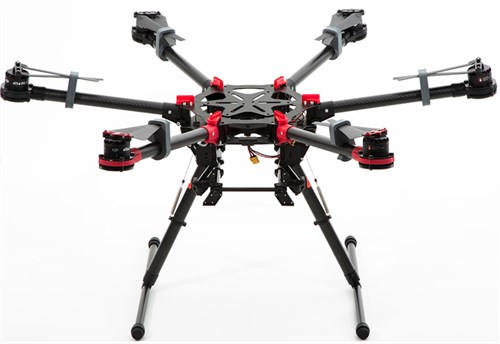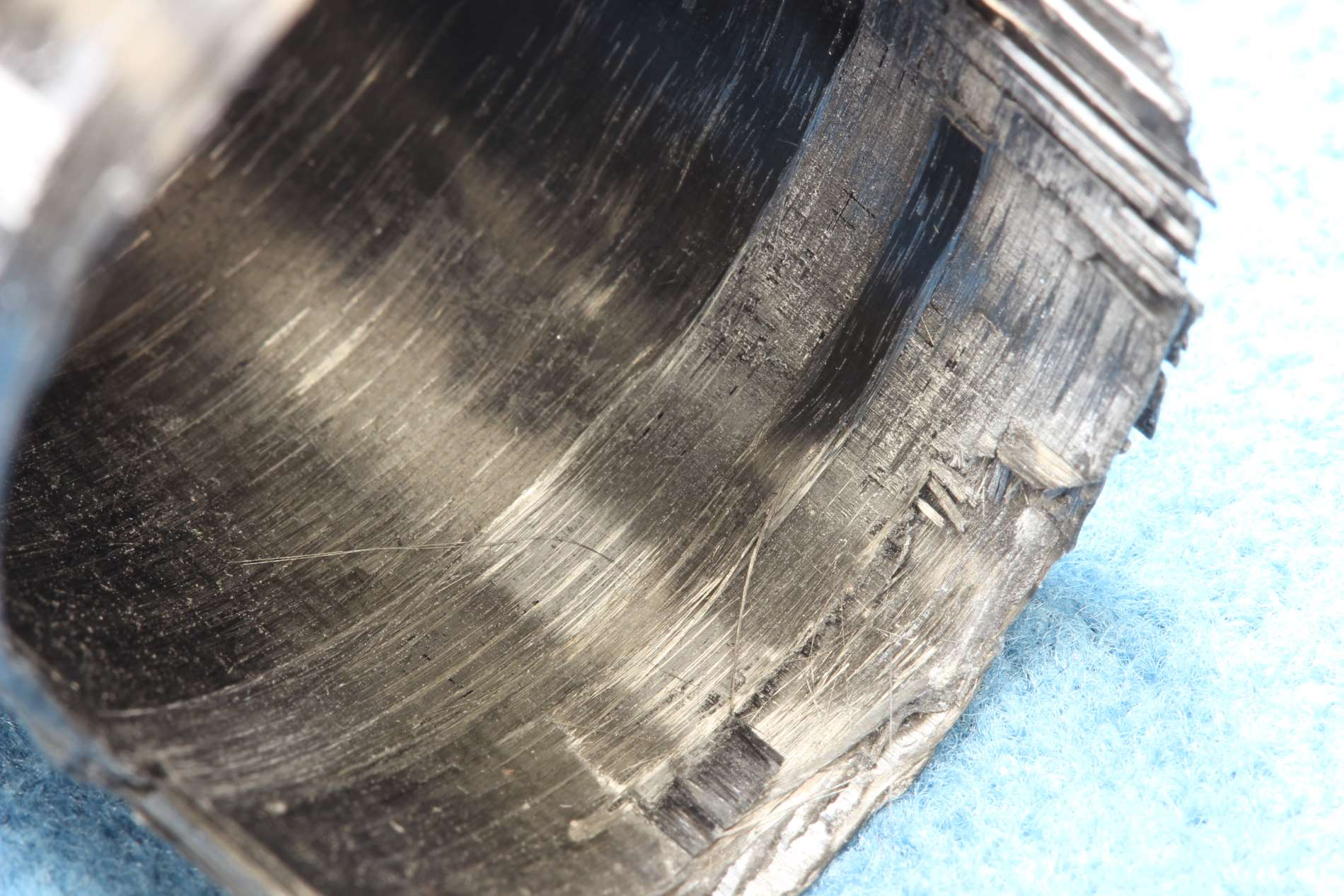What happened
On 19 September 2015, the flight controller of a DJI ‘Spreading Wings’ S900 remotely piloted aircraft (RPA), prepared to conduct aerial photography in Toowoomba, Queensland.
As part of the preparations, the flight controller identified potential hazards associated with the planned operation. The flight was to be conducted over a populated area, and within 3 NM of the Toowoomba aerodrome. The risk assessment included the identification of suitable emergency landing sites for the RPA. The RPA was designed to be capable of flight in the event of one rotor failure, and was also fitted with a parachute. The parachute deploys automatically in certain conditions, and deployment can also be commanded by the flight controller.
The flight controller conducted a daily inspection of the RPA, and found it to be serviceable, including no evidence of damage or cracking to the arms.
Prior to the flight, the flight controller conducted the pre-flight checks and made the appropriate broadcasts on the Toowoomba common traffic advisory frequency (CTAF). The flight controller performed control checks and verified that the controls were working correctly on the ground.
At about 1415 Eastern Standard Time (EST), the flight controller launched the RPA from the rooftop of a nine-storey building. The flight controller again performed control checks, and then commanded the RPA to climb out to the north-northeast. About 30 seconds after becoming airborne, the flight controller heard a loud crack and observed the RPA roll rapidly onto its back. The flight controller commanded the parachute to deploy, but the RPA descended rapidly and collided with the roof of a parked car in the street below.
The RPA was destroyed, the car roof was dented, and no one was injured.
DJI Spreading Wings S900

Source: dji.com
RPA serviceability
The RPA had a total time in service of 10.1 hours prior to the incident flight. Six arm tubes connect the motors to the main frame. The No. 5 arm, constructed of carbon fibre, was fractured, but remained attached to the main frame by the motor cable running through it.
The parachute had deployed and the gas canister used to deploy it was empty, but the parachute did not effectively decelerate the RPA. This was probably due to the RPA being on its back and preventing the parachute from opening properly.
Arm inspection
The ATSB conducted a visual inspection of the fractured arm. The arm was primarily comprised of plies of unidirectional carbon fibre tape. The ply orientation alternated between running parallel to the tube length and 90° to the tube length. The outer layer of the tube was woven carbon fabric with a clear gel coat.
Within the unidirectional plies around the fracture site, there were regions where the carbon fibres were not well consolidated or bonded with the resin matrix. Figure 1 shows some of the loose filaments observed on the innermost layer of the tube.
Figure 1: Innermost layer showing loose filaments

Source: ATSB
Distributor comments
The Australian distributor of the DJI S900 advised that their pre-sales testing included the following.
- During the process of assembly and configuration of the UAV system, all arms were raised and lowered numerous times.
- Upon installation of each arm, each arm was tested individually to ensure correct tension on the arm screws, light horizontal pressure was applied to ensure there is no lateral movement in the arm when it is locked, and to listen for any stress sounds that may emanate from the carbon fibre and/or connecting joints.
- The UAV system was tested to ensure proper and consistent functionality of the system. This included flying ‘full stick’ in all directions, and sudden stops.
Australian Certified UAV Operators Incorporated (ACUO) comments
The ACUO advised that they had no known issues regarding motor arm failures of DJI products.
ATSB comment
The ATSB was unable to determine whether or not pre-existing damage was present from prior operation or transit. However, the ATSB identified regions close to the fracture surface where fibres were not well consolidated within the resin. This may have affected the strength of this arm, possibly resulting in the in-flight failure.
The observed lack of bonding between fibre and resin is a result of manufacturing processes and would not have been caused by damage during transport or operation.
Even under maximum loads, the flight tests performed by the distributor may not necessarily identify defects (such as poor bonding between fibre and resin) within the manufactured carbon fibre tube, regardless of whether or not these defects ultimately result in failure. This is because subsurface cracks can propagate unpredictably in fibre composites. Failure can occur at a later time and even when the arm is experiencing loads below its designed maximum.
Despite this, the ATSB is unaware of any other arm failures on this model RPA, indicating that the design and properties of the arms are probably appropriate for the intended application.
Safety message
This incident highlights the importance of appropriate RPA operational controls and procedures. These are particularly important where operations are intended in the vicinity of populous areas or other traffic. The careful application of operational controls and procedures, underpinned by robust risk assessment, is essential as RPA use increases.
Information about remotely piloted aircraft systems (RPAS) is available from the CASA website.
Aviation Short Investigations Bulletin - Issue 45
Purpose of safety investigationsThe objective of a safety investigation is to enhance transport safety. This is done through:
It is not a function of the ATSB to apportion blame or provide a means for determining liability. At the same time, an investigation report must include factual material of sufficient weight to support the analysis and findings. At all times the ATSB endeavours to balance the use of material that could imply adverse comment with the need to properly explain what happened, and why, in a fair and unbiased manner. The ATSB does not investigate for the purpose of taking administrative, regulatory or criminal action. TerminologyAn explanation of terminology used in ATSB investigation reports is available here. This includes terms such as occurrence, contributing factor, other factor that increased risk, and safety issue. Publishing informationReleased in accordance with section 25 of the Transport Safety Investigation Act 2003 Published by: Australian Transport Safety Bureau © Commonwealth of Australia 2015
Ownership of intellectual property rights in this publication Unless otherwise noted, copyright (and any other intellectual property rights, if any) in this report publication is owned by the Commonwealth of Australia. Creative Commons licence With the exception of the Coat of Arms, ATSB logo, and photos and graphics in which a third party holds copyright, this publication is licensed under a Creative Commons Attribution 3.0 Australia licence. Creative Commons Attribution 3.0 Australia Licence is a standard form licence agreement that allows you to copy, distribute, transmit and adapt this publication provided that you attribute the work. The ATSB’s preference is that you attribute this publication (and any material sourced from it) using the following wording: Source: Australian Transport Safety Bureau Copyright in material obtained from other agencies, private individuals or organisations, belongs to those agencies, individuals or organisations. Where you wish to use their material, you will need to contact them directly. |


